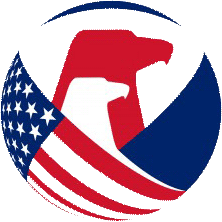Booster Seats
Federal law requires that booster seats comply with the Safety Standard for Booster Seats, 16 CFR part 1237 (Effective January 2, 2020), and with additional requirements, including those of the Consumer Product Safety Improvement Act of 2008 (CPSIA).
Manufacturers and importers of booster seats must certify in a Children's Product Certificate (CPC) that their products comply with the mandatory standard and any additional CPSIA requirements after the products have been tested for compliance at a CPSC-accepted, third party laboratory. These requirements are discussed below and at: www.cpsc.gov/BusinessEducation.
A “booster seat,” as defined in ASTM F2640-18, is a juvenile chair, which is placed on an adult chair to elevate a child to standard dining table height. The booster seat is made for the purpose of containing a child, up to 5 years of age, and normally for the purposes of feeding or eating. A booster seat may be height adjustable and include a reclined position.
The standard seeks to minimize the risk of deaths and injuries associated with the use of booster seats, including those related to infant falls, entrapment, or structural and design problems.
The mandatory Safety Standard for Booster Seats incorporates by reference ASTM F2640-18, the voluntary standard, without modifications. The Commission published its final rule in July 2, 2018, 83 Fed. Reg. 30837 (Effective January 2, 2020). ASTM F2640-18 can be purchased from ASTM International via: www.astm.org.
The standard includes testing requirements for structural integrity, tray performance, the child-restraint system, and other performance requirements specific to booster seats.
The standard also includes:
- a requirement that wooden parts be smooth and free of splinters;
- a prohibition of hazardous sharp points and edges;
- a requirement that no small parts exist before testing or are liberated as a result of testing;
- design requirements to prevent scissoring, shearing, and pinching;
- limitations on measurements of any circular holes in rigid materials to prevent finger entrapment;
- requirements that the product remain fully functional and not tip over backwards or sideways when tested for stability;
- a requirement that any exposed coil spring be covered or designed to prevent injury from entrapment;
- testing requirements for graspable protective components;
- requirements for toy attachments;
- requirements for the content, format, and permanency of labels and warnings; and
- requirements for the inclusion of written instructional literature.
For more information on the requirements reference ASTM F2640-18.
Booster seats are subject to requirements for surface coatings, lead, testing and certification, registration cards, and tracking labels. These requirements are discussed below and at: www.cpsc.gov/BusinessEducation:
- Surface Coating Limit: Booster seats must not be painted with paint that contains more than 90 ppm (0.009 percent) lead.
- Lead Content Limit: Booster seats must not contain greater than 100 ppm (0.01 percent) of total lead content in any accessible component part.
- Phthalate Content Limits: Booster seats that contain plasticized parts and are designed, marketed, or intended to facilitate eating, must not contain more than 0.1 percent of the following eight specified phthalates: di-(2-ethylhexyl) phthalate (DEHP), dibutyl phthalate (DBP), or benzyl butyl phthalate (BBP), diisononyl phthalate (DINP), diisobutyl phthalate (DIBP), di-n-pentyl phthalate (DPENP), di-n-hexyl phthalate (DHEXP), and dicyclohexyl phthalate (DCHP).
- Testing and Certification: Booster seats, like all products that are designed or intended primarily for children 12 years of age or younger, must be tested by a CPSC-accepted, third party laboratory for compliance with the Booster Seats Standard (Effective January 2, 2020) and all other applicable children’s product safety rules. Based on that testing, a domestic manufacturer (or importer) of booster seats must issue a Children's Product Certificate specifying each applicable rule and indicating that the product complies with those rules.
- Product and Outer Package Labeling Requirements: Durable infant or toddler products, such as booster seats, must be permanently marked with specific labeling information, including tracking labels, on the product and on the packaging.
- Product Registration Card Requirement: In addition, durable infant or toddler products are required to have additional product markings and a product registration card attached to the product. This chart summarizes the specific labeling and registration requirements that durable infant and toddler products must meet.
